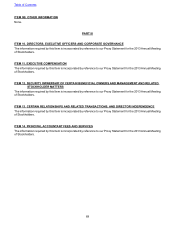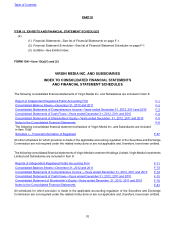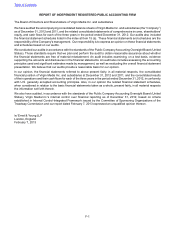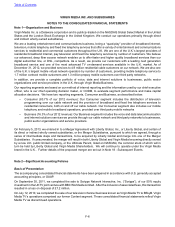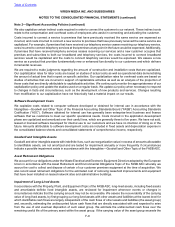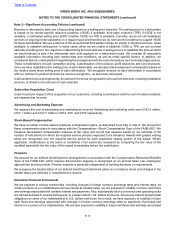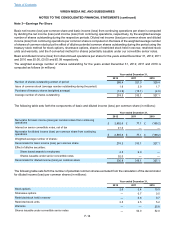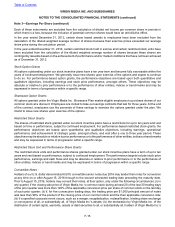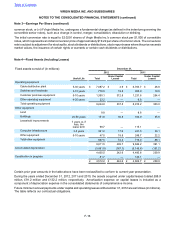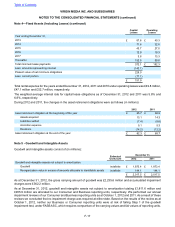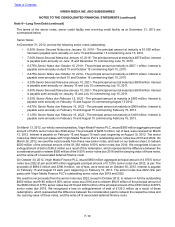Virgin Media 2012 Annual Report Download - page 80
Download and view the complete annual report
Please find page 80 of the 2012 Virgin Media annual report below. You can navigate through the pages in the report by either clicking on the pages listed below, or by using the keyword search tool below to find specific information within the annual report.
F-9
We also capitalize certain indirect costs required in order to connect the customer to our network. These indirect costs
relate to the compensation and overhead costs of employees who assist in connecting and activating the customer.
Costs incurred to connect a service to premises that have previously received the same service are expensed as
incurred, and costs incurred to connect a new service to premises that have previously received the same service are
capitalized. For example, if premises that have received our telephony service ceases receiving our telephony service,
costs incurred to connect telephony services at that premises at any point in the future would be expensed. Additionally,
if premises that have received telephony services ceases receiving our services and a new customer occupies that
premises and subscribes to both our broadband and telephony services, the costs incurred to connect broadband
services would be capitalized and the costs to connect telephony services would be expensed. We assess a new
service as a product that provides fundamentally new or enhanced functionality to our customers and which delivers
incremental revenues.
We are required to make judgments regarding the amount of construction and installation costs that are capitalized.
Our capitalization rates for labor costs are based on studies of actual costs as well as operational data demonstrating
the amount of actual time that is spent on specific activities. Our capitalization rates for overhead costs are based on
studies of activities that are incurred in support of capitalizable activities as well as an analysis of the proportion of
those costs that are directly attributable to capitalizable activities. We continuously monitor the appropriateness of our
capitalization policy and update the studies used on a regular basis. We update our policy when necessary to respond
to changes in facts and circumstances, such as the development of new products and services. Changes resulting
from modification to our capitalization have not historically had a material impact on our results.
Software Development Costs
We capitalize costs related to computer software developed or obtained for internal use in accordance with the
Intangibles—Goodwill and Other Topic of the Financial Accounting Standards Board (“FASB”) Accounting Standards
Codification (“ASC”). Software obtained for internal use has generally been enterprise-level business and finance
software that we customize to meet our specific operational needs. Costs incurred in the application development
phase are capitalized and amortized over their useful lives, which are generally three to five years. We have not sold,
leased or licensed software developed for internal use to our customers and we have no intention of doing so in the
future. Amounts attributable to software development costs are included in fixed assets and depreciation expense in
the consolidated balance sheets and consolidated statements of comprehensive income, respectively.
Goodwill and Intangible Assets
Goodwill and other intangible assets with indefinite lives, such as reorganization value in excess of amounts allocatable
to identifiable assets, are not amortized and are tested for impairment annually or more frequently if circumstances
indicate a possible impairment exists in accordance with the Intangibles—Goodwill and Other Topic of the FASB ASC.
Asset Retirement Obligations
We account for our obligations under the Waste Electrical and Electronic Equipment Directive adopted by the European
Union in accordance with the Asset Retirement and Environmental Obligations Topic of the FASB ASC whereby we
accrue the cost to collect and dispose of certain of our customer premises equipment at the time of acquisition. We
also record asset retirement obligations for the estimated cost of removing leasehold improvements and equipment
that have been installed on leased network sites and administrative buildings.
Impairment of Long-Lived Assets
In accordance with the Property, Plant, and Equipment Topic of the FASB ASC, long-lived assets, including fixed assets
and amortizable definite lived intangible assets, are reviewed for impairment whenever events or changes in
circumstances indicate that the carrying amount may not be recoverable. We assess the recoverability of the carrying
value of long-lived assets, by first grouping our long-lived assets with other assets and liabilities at the lowest level for
which identifiable cash flows are largely independent of the cash flows of other assets and liabilities (the asset group)
and, secondly, estimating the undiscounted future cash flows that are directly associated with and expected to arise
from the use of and eventual disposition of such asset group. We estimate the undiscounted cash flows over the
remaining useful life of the primary asset within the asset group. If the carrying value of the asset group exceeds the
Table of Contents
VIRGIN MEDIA INC. AND SUBSIDIARIES
NOTES TO THE CONSOLIDATED FINANCIAL STATEMENTS (continued)
Note 2—Significant Accounting Policies (continued)


